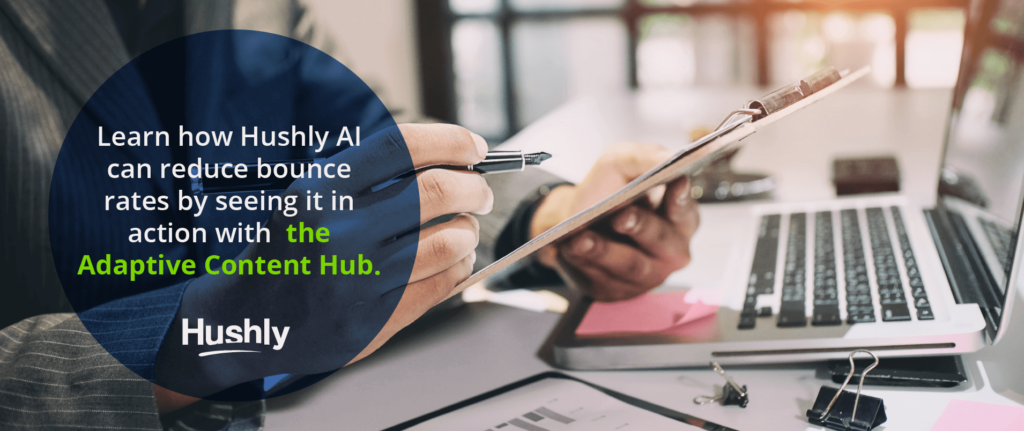Website bounce rate is one of the most misunderstood metrics in Google Analytics – often confused with the exit rate.
As Google explains, a bounce is a single-page session. If someone clicks on a blog post link from social media, reads the article, and returns to their newsfeed afterward, that’s a bounce.
Google Analytics tells you the individual bounce rate for each page as well as the average across your website.
If a high bounce rate tells you people are leaving your site, that’s not good, right?
Not necessarily. It depends. For some pages, you’ll certainly want to learn how to reduce your bounce rate. For others, however, it’s not so important.
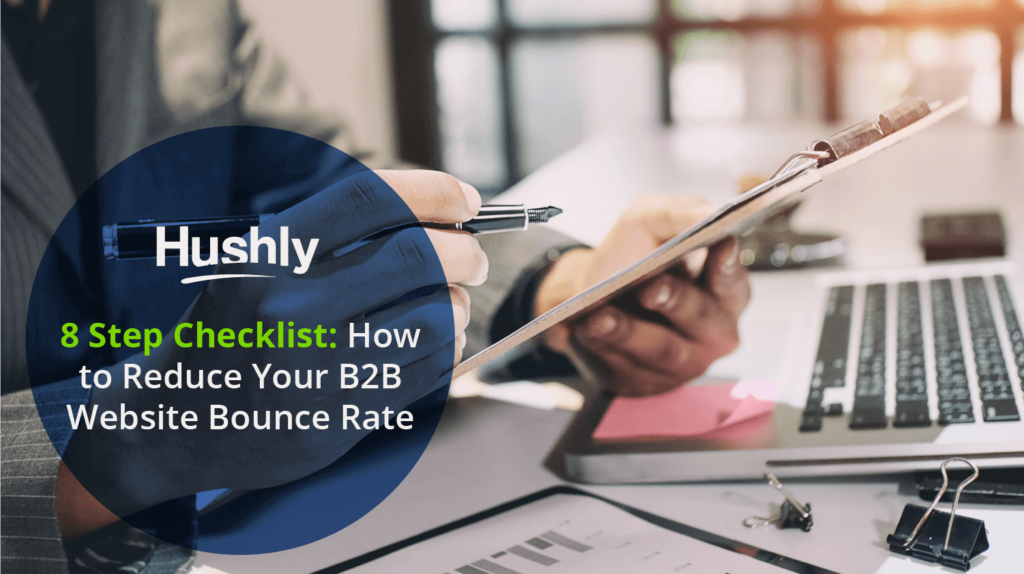
What’s a Good Bounce Rate for B2B Websites?
Like most metrics, the B2B bounce rate benchmark isn’t set in stone. By crowdsourcing an answer on Quora, we can see 40% to 60% seems to be the agreed “good” range for B2B websites.
But what about minimalist PPC landing pages with a single CTA? Or FAQ pages?
Shouldn’t those have high bounce rates because the visitors either converted or found what they needed?
It really depends on the goal of each page. With content, your goal is to hook people and encourage them to keep clicking. A high bounce rate for your content hub or homepage signals there’s something wrong with your:
- Speed
- User experience (UX)
- Design and navigation
- Content quality and headlines
How to Reduce Your B2B Website Bounce Rate
Some strategies for reducing your bounce rate are simple fixes. Others, however, require you to take time to rethink and adapt how you approach your content experience.
1. Figure Out Which Pages Need Improvement
Don’t look at your bounce rate alone to judge your engagement and performance. Make sure to analyze other metrics like:
- Pages per session
- New and returning visitors
- Time spent on each page
- Conversion rates
A high bounce rate across all pages – including your homepage – definitely warrants a closer look. Don’t worry about landing pages too much since they serve a specific purpose – unless that purpose is to drive traffic to a second page.
Start with your homepage or low-performing blog posts.
2. How to Reduce Your Bounce Rate by Breaking Your Reliance on Social Media
Social media is great for reaching new audiences, building relationships, and boosting brand awareness. However, traffic from social media tends to deliver the second-highest bounce rates – just behind display ads.
When people click on your blog post from their social feed, they’ll read it and hit the back button when they’re finished. Whether consciously or subconsciously, your blog was a side quest from the main quest of scrolling social media.
Devote some more time to keyword research, SERP rankings, and even email marketing. Organic traffic delivers lower bounce rates and higher session times by far.
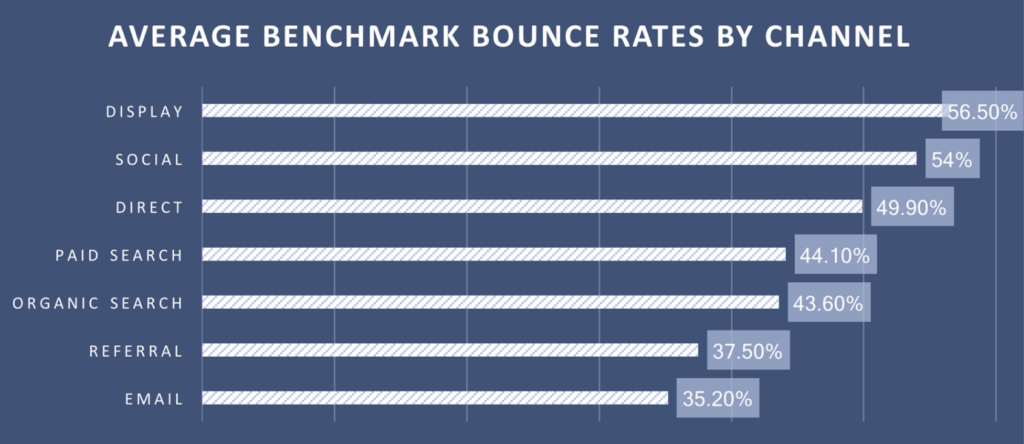
It’s also smart to focus on building your referral traffic, which can be quite sustainable. Look for new guest blogging opportunities and syndication.
3. Make Sure Your Site is Mobile-Optimized
Up to 70% of B2B searches happen on mobile devices, so optimization is critical.
There’s nothing less mobile-friendly than a lead magnet form. You can optimize a form all you want – it’s still a form standing in the way of content.
Buyers – especially young buyers – are more likely to hit the back button and look elsewhere for the information they need. To reduce bounce rates, get rid of forms. It can even boost your engagement by 3x and lead quality by 59%.
4. How to Reduce Your Bounce Rate with an AI Engine for Personalization
When it comes to personalization, business buyer expectations mirror that of consumers. 72% expect hyper-personalization and an Amazon-like experience:
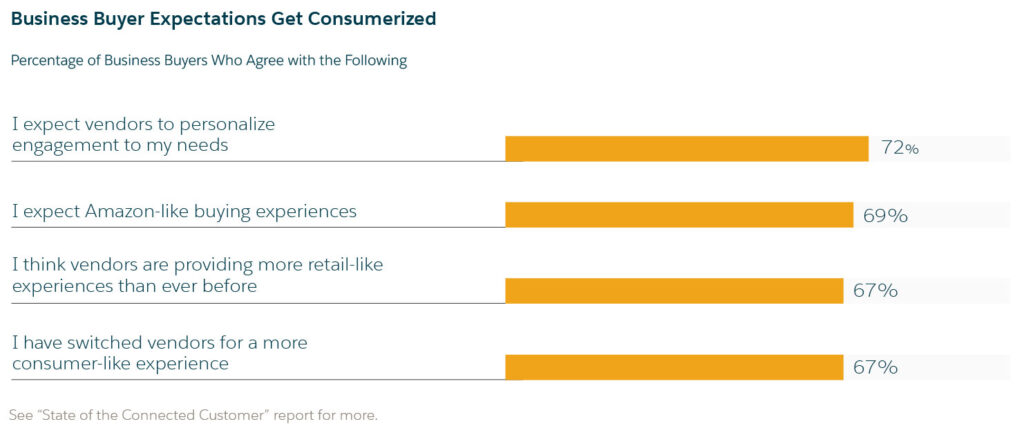
An AI engine is the only way to personalize your website in real-time with visitor behavior. AI gives your visitors the Amazon-like experience they expect because it uses similar algorithms to select personalized content recommendations.
It’s no surprise that 84% of businesses expect to see ROI from AI within a year through better engagement and lead nurturing.
5. Speed Up Your B2B Website
No one likes a slow website. With 5G, the demand for instant gratification will only grow stronger. Your website should load in under three seconds – ideally two.
You can use tools like Pingdom to check. WordPress plugins can compress images for you instantly, clear caches, and clean up file issues. However, some fixes – like redirects – are best left to an expert.
6. How to Reduce Bounce Rate by Rethinking Your Exit Intent Popups
If you want to know how to reduce bounce rate, jump on the exit intent popup bandwagon. Be careful, though. No one wants to be confronted with a form as they’re trying to leave your site.
Instead, use an AI engine to catch your visitors with relevant content based on their reading behavior.
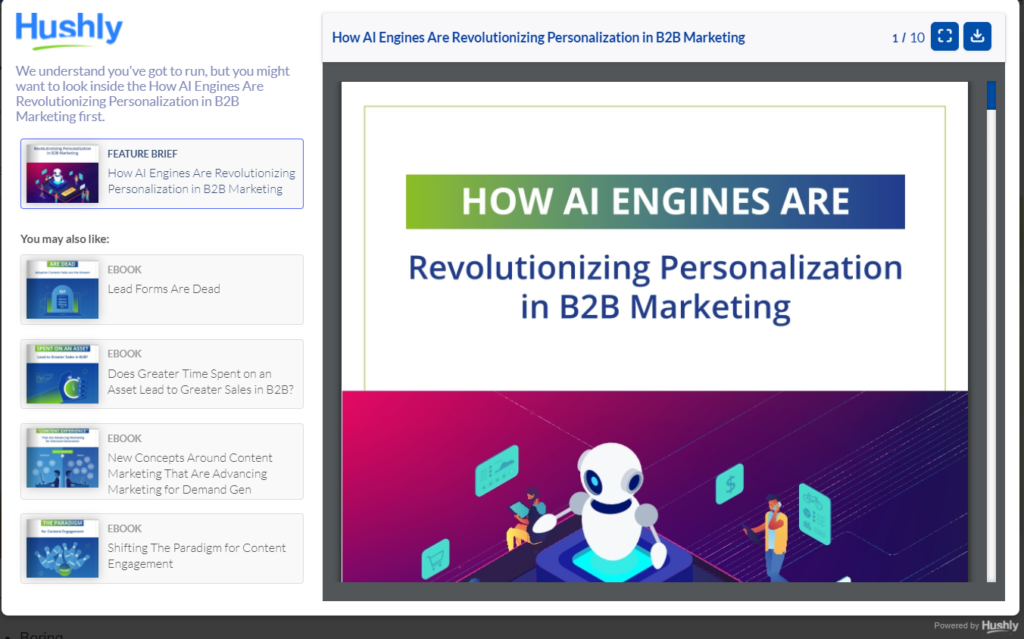
7. Kick Your Content Quality Up a Notch
Sometimes, a high bounce rate tells us we need to improve our content quality. Ask yourself these questions:
- Do your headlines match the content’s copy?
- Are you including enough internal links and CTAs around your copy?
- Is your content too general to resonate with visitors?
- Are you creating the right types of content (blogs, eBooks, podcasts, etc.) for every stage?
8. Reorganize Your Content
Business buyers say they’re more likely to binge content for up to 20 minutes if it’s organized properly.
68% would like you to organize your eBooks, case studies, and blogs by pain point or issue. Another 58% say it would be helpful to see categories based on industry or vertical.
Remember, your content organization should make your visitors’ lives easier. Help them find what they need from you with minimal effort and employ content bingeing features.
Engage Audiences with the Power of AI
Hushly’s AI engine helps you improve website engagement while you sleep! Using the same algorithms as major brands like Netflix and Amazon, the Hushly engine study’s each visitor’s behavior to provide personalized content recommendations. You can create a content experience that allows leads to self-nurture at their own pace.
Learn how Hushly AI can reduce bounce rates by seeing it in action with the Adaptive Content Hub.
